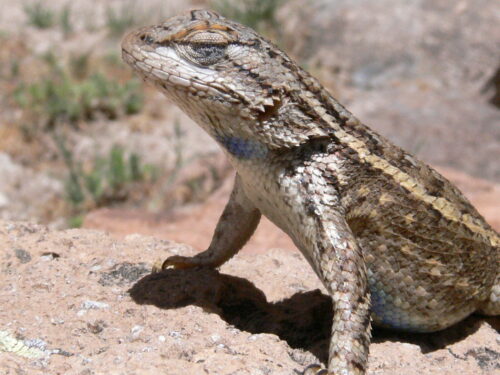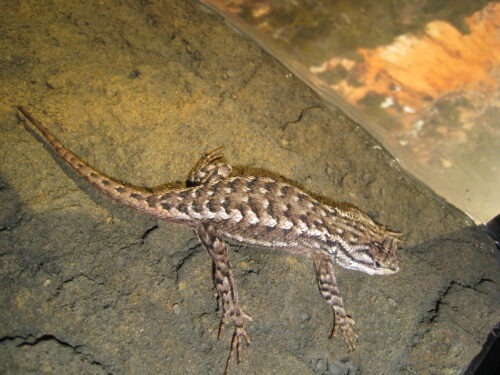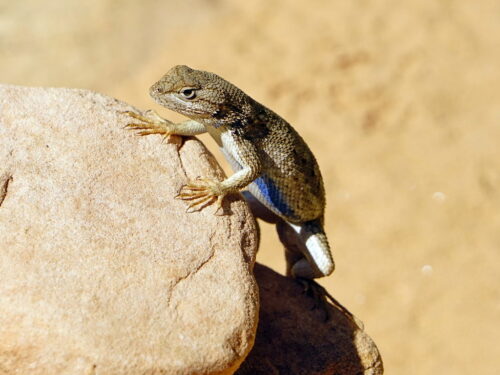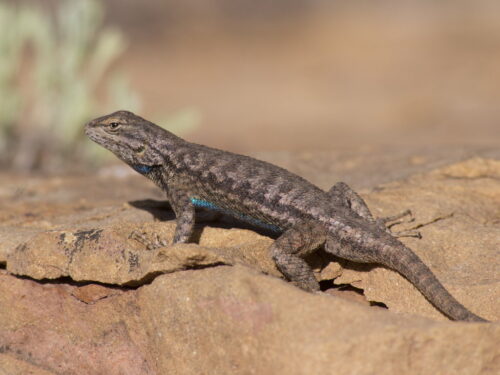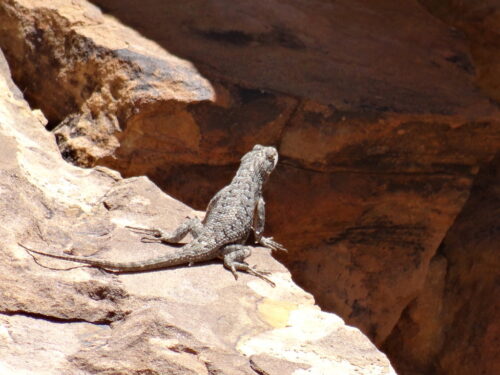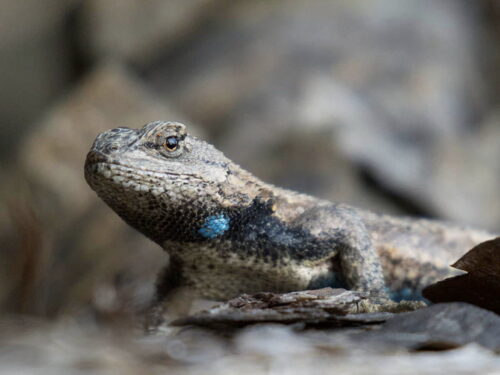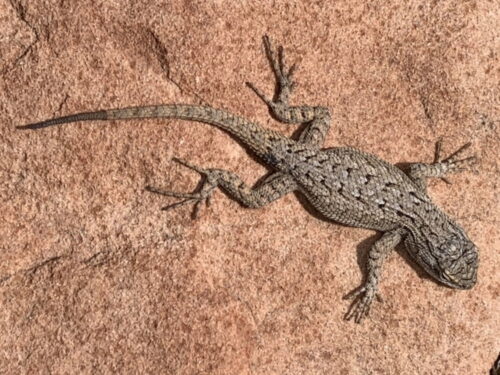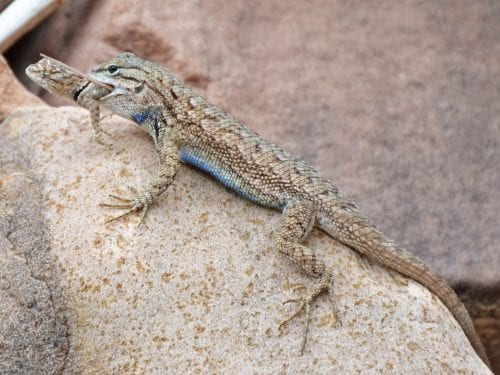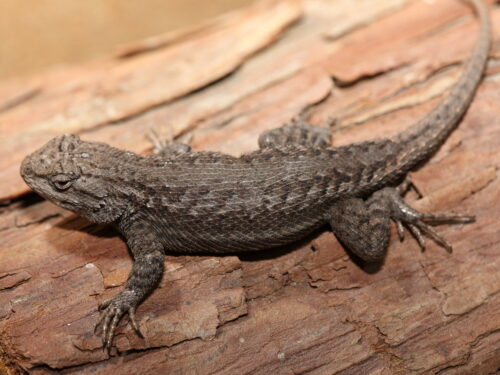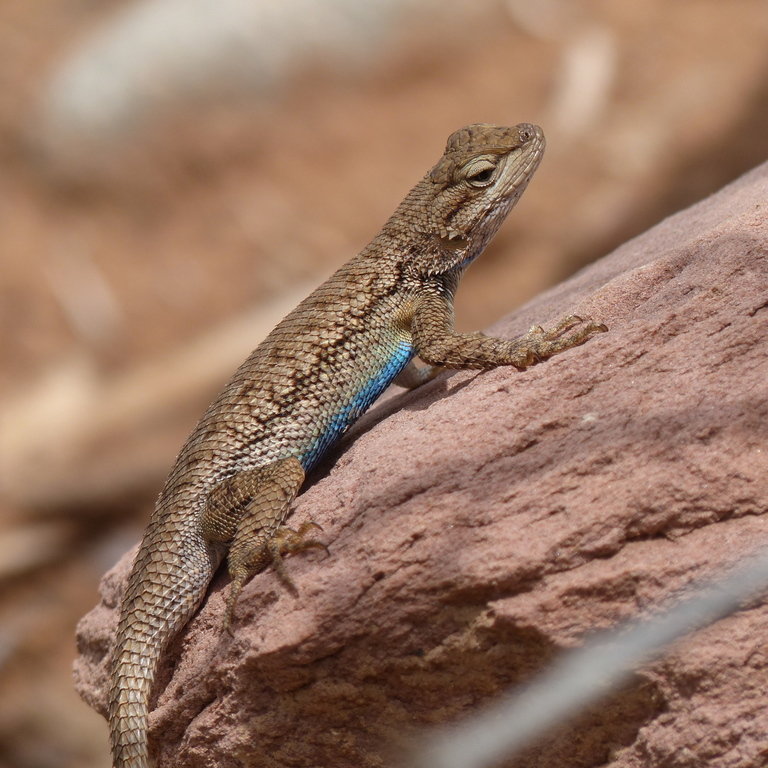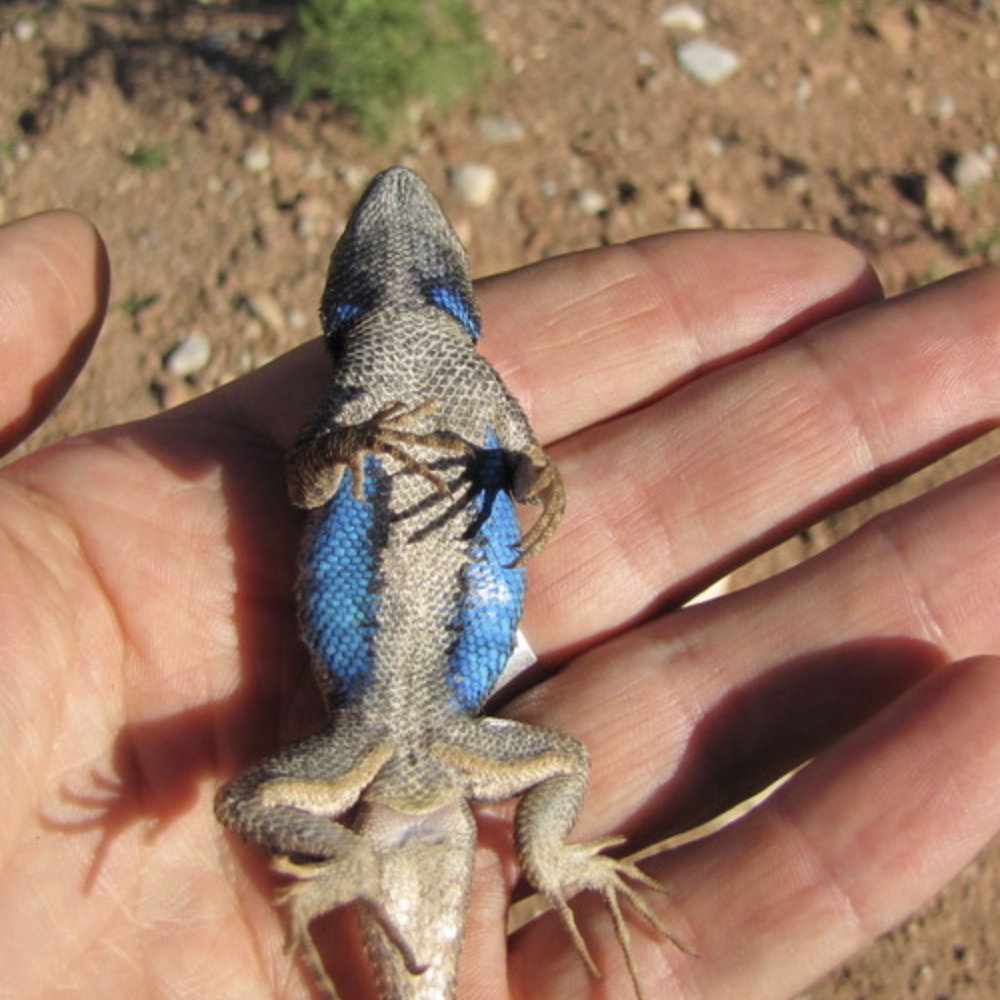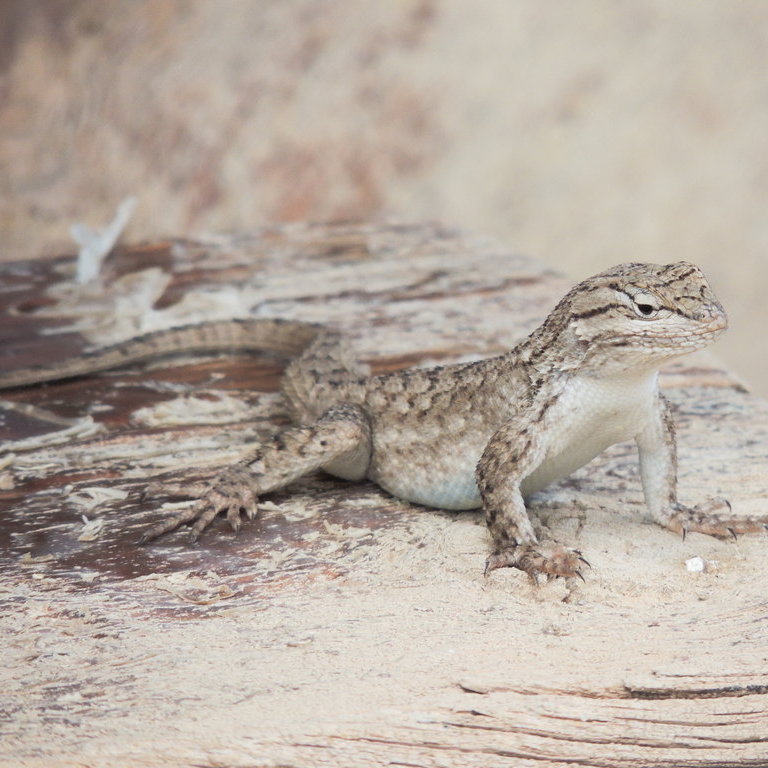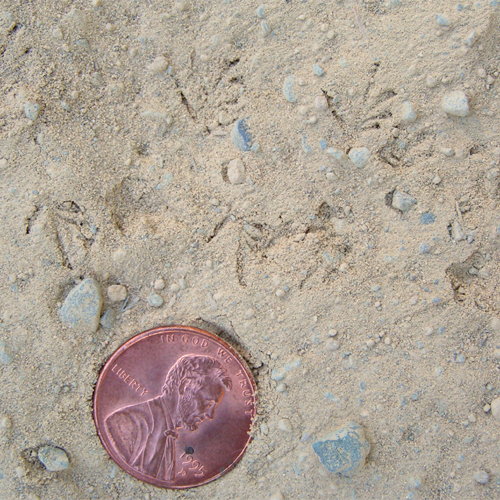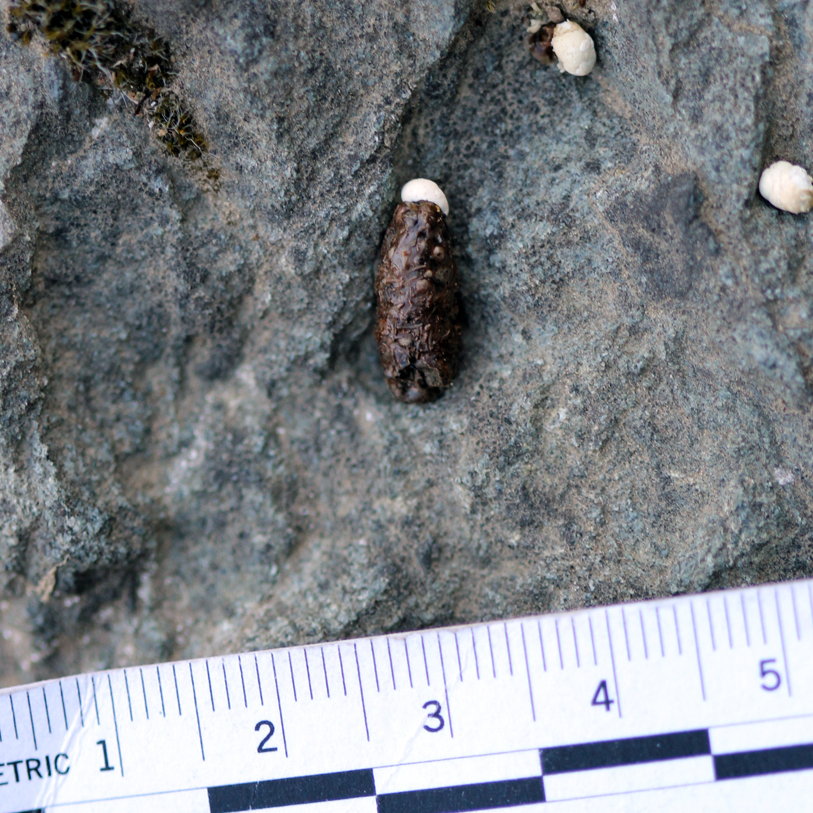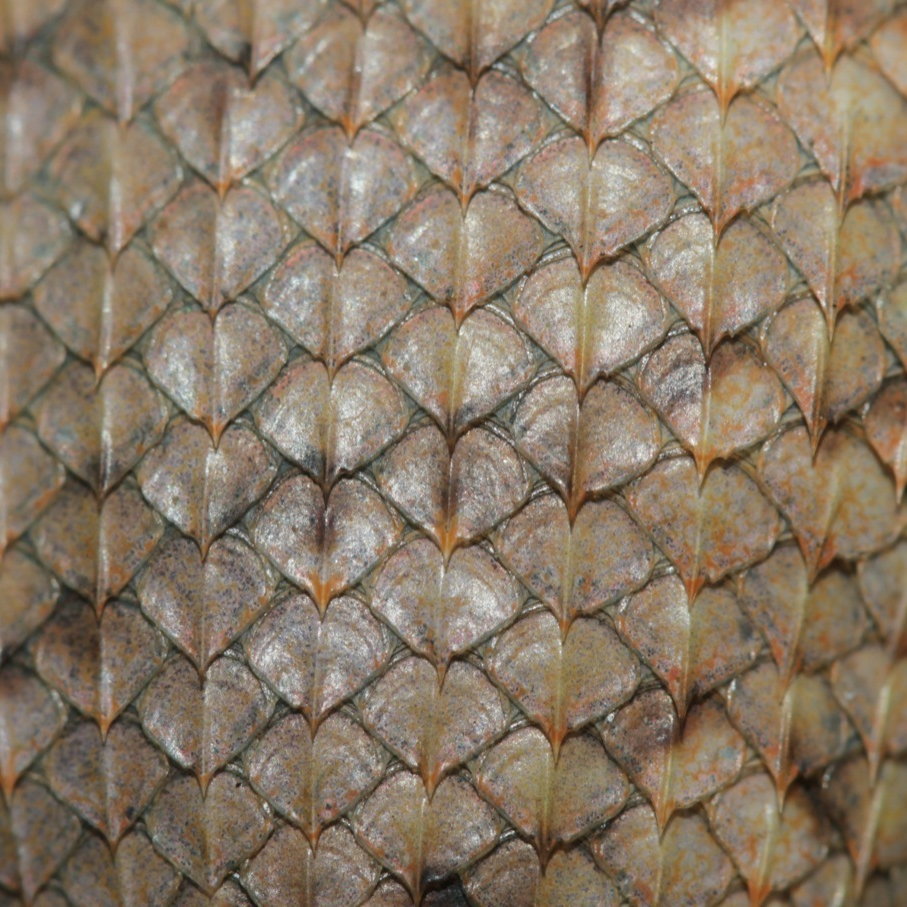Plateau Fence Lizard
Scientific name: Sceloporus tristichus
Type: Reptile
Family: Phrynosomatidae (North American Spiny Lizards)
Size: 4 to 7.5 in long (total length)
Weight: 0.5 ounces
Life Span: Likely less than 5 years
Physical Description
The plateau fence lizard is a medium-sized spiny lizard that is a member of the eastern fence species group. It is typically colored in shades of gray and brown overlaid with varying stripes, chevrons, or crossbars and pointed, keeled, overlapping scales.
Males are distinguished by two large, blue patches with dark edges on the belly and two more on the underside of the throat. While females may have some blue on the throat and belly, these patches, if present, are much fainter and lack dark edges. The young look like the females.
Range and Habitat
Until 2002, the plateau fence lizard was considered a subspecies of the eastern fence lizard (Sceloporus undulatus). Now it, it is recognized as a species (Sceloporus tristichus) of its own and is the fence lizard native to northern New Mexico. The eastern fence lizard group as a whole is found throughout the southern half of the US and northern portion of Mexico. Several other “new” species are located in other parts of New Mexico.
Plateau fence lizards are found in rocky and wooded areas. For protection, they typically live under wood piles, logs, and rocks. They can be seen during daylight hours basking in these same areas. In addition, they are often seen on fences from which their common name is derived.
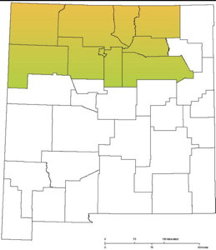
Diet
Fence lizards primarily eat insects and other arthropods such as ants, beetles, weevils, spiders, and centipedes. They will sometimes eat snails and small lizards along with a limited amount of plant material.
Behavior and Social Life
Plateau fence lizards are active during the day. During the summer, they are most active mid-morning and late afternoon. Fence lizards forage on the ground. They sit and wait, then dart out to catch their prey. Fence lizards have very defined home ranges of about 500 square feet. Males will head bob, do push ups, and even puff themselves up to warn-off other individuals.
Fence lizards spend much of their time basking up on rocks, trees, fence posts, and wood piles. They are found more often on rocks during cooler weather and on trees during warmer. They will choose a more enclosed surrounding than other types of lizards and will often sleep in an area near where they prefer to bask. Fence lizards hibernate during the colder months, but will come out and bask on warmer days.
Life Cycle
During the mating season (April to August), males will flash their blue patches to attract females. They also have a pheromone that they release. After mating, males and females go their separate ways. Males may seek out other females.
Females lay several white, ovoid eggs in a pit dug in the ground. They then cover the eggs with about an 1 1/2 to 2 1/2-inches of soil before abandoning them. Being buried keeps the eggs at a constant moisture level and temperature. Older female lizards will have up to 4 clutches per mating season.
It takes about 10 weeks for the eggs to hatch. Offspring are about half the size of adults at that time. They reach maturity at around 1 year of age.
Mating
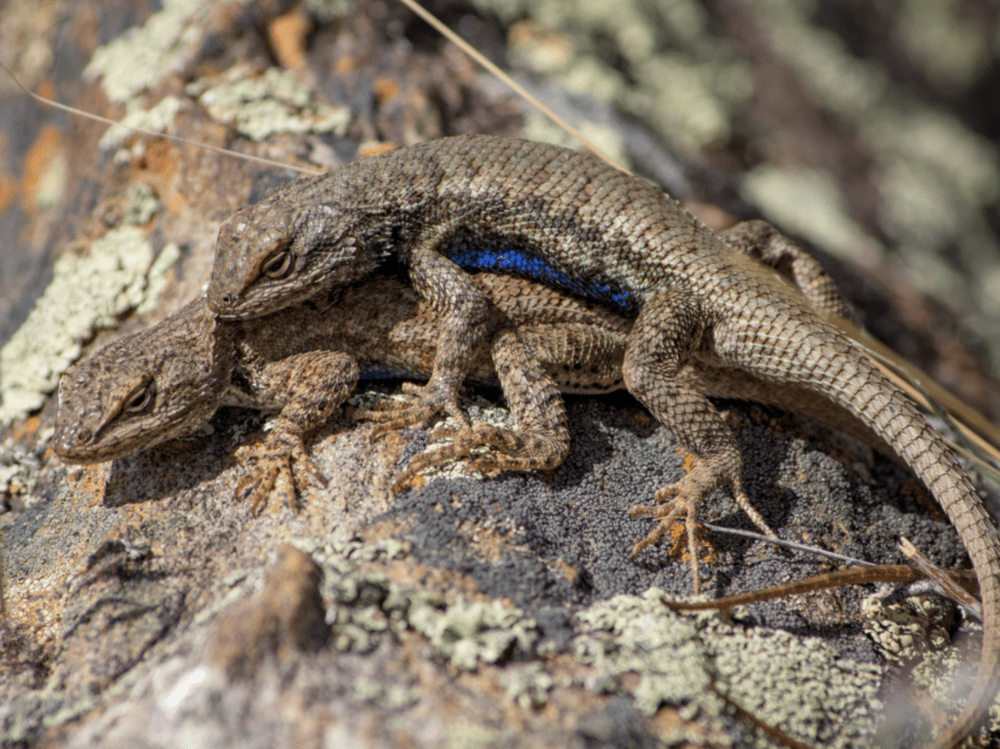
Female with Eggs
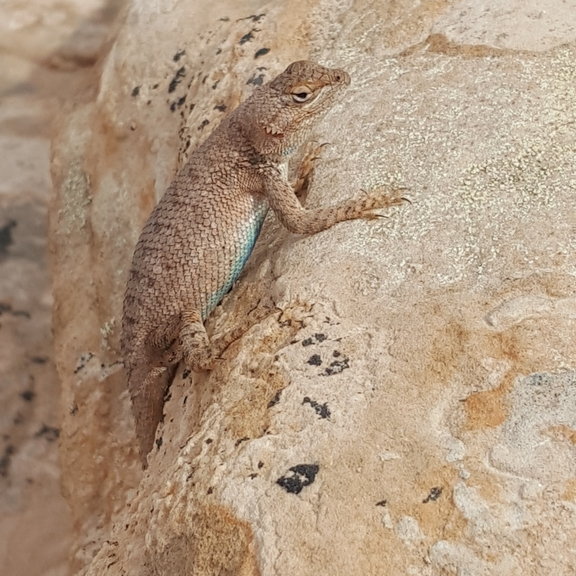
Young Lizard
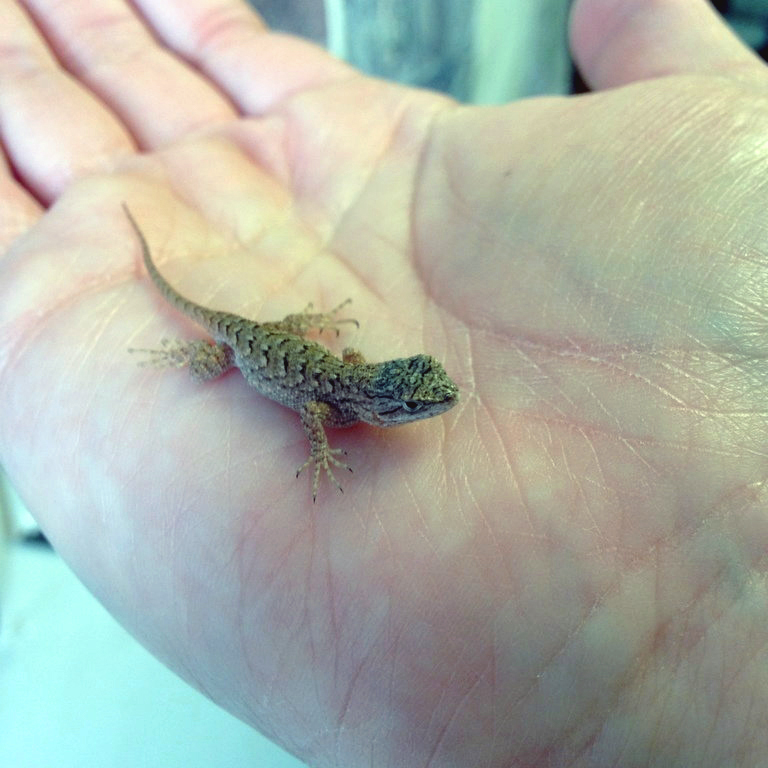
Ecological Role
Plateau fence lizards mainly eat insects and help keep these populations in check. They, in turn, are prey for birds and other predators like larger lizards, snakes, and even domestic cats and dogs.
Interactions With Humans
Plateau fence lizards are important in keeping populations of pest insects and arachnids down. Though they may bite if harassed, they are not harmful to humans.
Interesting Facts
- Fence lizards have the nickname of “pine lizard” due to the fact they are very fond of pine trees.
- The fence lizard is one of our most arboreal lizards.
- They can be seen dashing up trees and hiding on opposite side to escape predation.
- Plateau fence lizards are non-venomous and nonpoisonous.
- Fence lizards are sometimes kept as pets.
- They generally hibernate from November to April.
- These lizards generally forage twice daily.
- The size of the territory is correlated to the availability of food and what other lizard species are in the area.
- Female fence lizards typically lay eight eggs per clutch.

